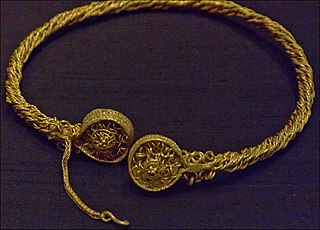
A torc, also spelled torq or torque, is a large rigid or stiff neck ring in metal, made either as a single piece or from strands twisted together. The great majority are open at the front, although some have hook and ring closures and a few have mortice and tenon locking catches to close them. Many seem designed for near-permanent wear and would have been difficult to remove.

Martin Rundkvist is a Swedish archaeologist and associate professor at the University of Łódź in Poland. His research focuses on the Bronze, Iron, and Middle Ages of Scandinavia, including significant excavations in the province of Östergötland.

Torsburgen, Tors borg or þors borg are the remains of an ancient hillfort in Kräklingbo on the Swedish island of Gotland in the Baltic Sea. The fort is approximately 1.2 km2 (0.46 sq mi), was constructed in the 1st-4th century and in use until the 12th century. Situated on a plateau hill it is protected by high cliffs and wall sections, almost 2 km (1.2 mi) long in total. The fort is featured in the Gutasaga. The plateau is also a nature reserve.
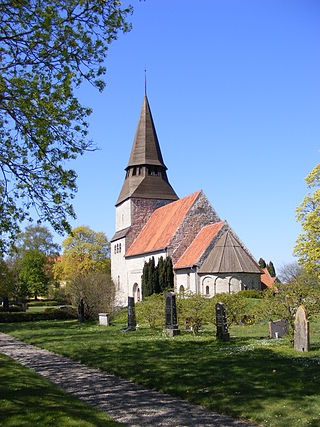
Havdhem is a locality situated on the Swedish island of Gotland with 300 inhabitants in 2014.
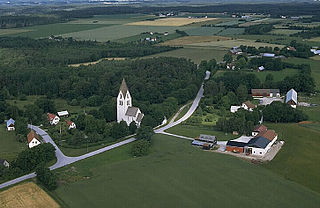
Mästerby is a populated area, a socken or administrative parish, on the Swedish island of Gotland. It comprises the same area as the administrative Mästerby District, established on 1 January 2016.

The Gotland Museum in Visby, Sweden, is the county museum of Gotland. It was founded by the Friends of Gotland's Antiquity society in 1875, at the initiative of Pehr Arvid Säve. The museum owns a number of houses and farms on Gotland, some of which are used as museums. It also has a publishing house for books on subjects related to the island's heritage.
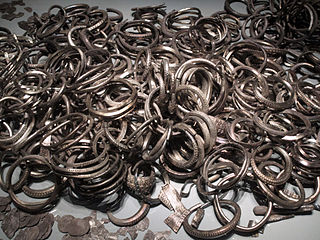
The Spillings Hoard is the world's largest Viking silver treasure, found on Friday 16 July 1999 in a field at the Spilling farm northwest of Slite, on northern Gotland, Sweden. The silver hoard consisted of two parts with a total weight of 67 kg (148 lb) before conservation and consisted of, among other things, 14,295 coins most of which were Islamic from other countries. A third deposition containing over 20 kg (44 lb) of bronze scrap-metal was also found. The three caches had been hidden under the floorboards of a Viking outhouse sometime during the 9th century.

Tofta, also known as Gotlands Tofta, is a populated area, a socken, on the Swedish island of Gotland. It comprises the same area as the administrative Tofta District, established on 1 January 2016.
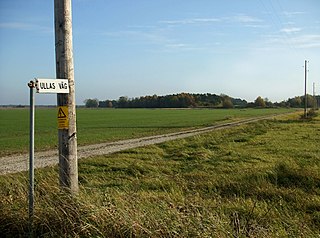
Barlingbo is a populated area, a socken, on the Swedish island of Gotland. It comprises the same area as the administrative Barlingbo District, established on 1 January 2016. It is mostly known for the Stafva Manor, the largest cheese producer, and once one of the largest farms, on Gotland.

Burs is a populated area, a socken, on the Swedish island of Gotland. It comprises the same area as the administrative Burs District, established on 1 January 2016. As of 2015, Gustaf Edman from Burs was probably Sweden's tallest man.

Brucebo is an artists' estate in Själsö, Väskinde on Gotland, Sweden, created by William Blair Bruce and his wife Carolina Benedicks-Bruce. The estate later became a nature reserve and an art museum managed by the Brucebo Foundation. The Bruce and Benedicks legacy also includes the Brucebo Fine Art Scholarship for young Canadian artists.
Mästermyr is a, now mostly drained, mire west of Hemse on the island of Gotland, Sweden. The Mästermyr chest was found here in 1936.

Fardhem is a populated area, a socken, on the Swedish island of Gotland. It comprises the same area as the administrative Fardhem District, established on 1 January 2016. The area is rural with farms, tourism and small companies as the main sources of income. It is home to football club Fardhem IF.

Eskelhem is a populated area, a socken, on the Swedish island of Gotland. The area is rural with farms. It comprises the same area as the administrative Eskelhem District, established on 1 January 2016.
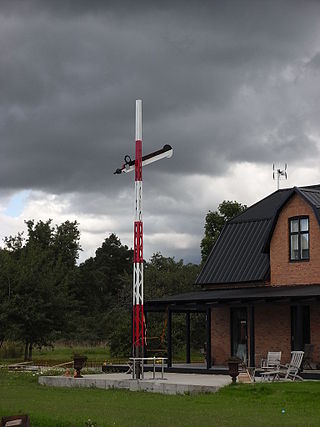
Hablingbo is a populated area, a socken, on the Swedish island of Gotland. It comprises the same area as the administrative Hablingbo District, established on 1 January 2016.

Hamra is a populated area, a socken, on the Swedish island of Gotland. It comprises the same area as the administrative Hamra District, established on 1 January 2016.

Eke is a populated area, a socken, on the Swedish island of Gotland. It comprises the same area as the administrative Eke District, established on 1 January 2016.

Follingbo is a populated area, a socken, on the Swedish island of Gotland. It comprises the same area as the administrative Follingbo District, established on 1 January 2016.
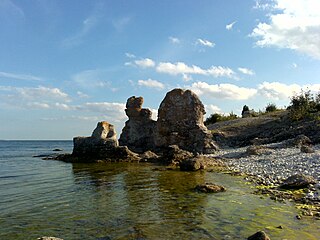
Hellvi is a populated area, a socken, on the Swedish island of Gotland. It comprises the same area as the administrative Hellvi District, established on 1 January 2016.





